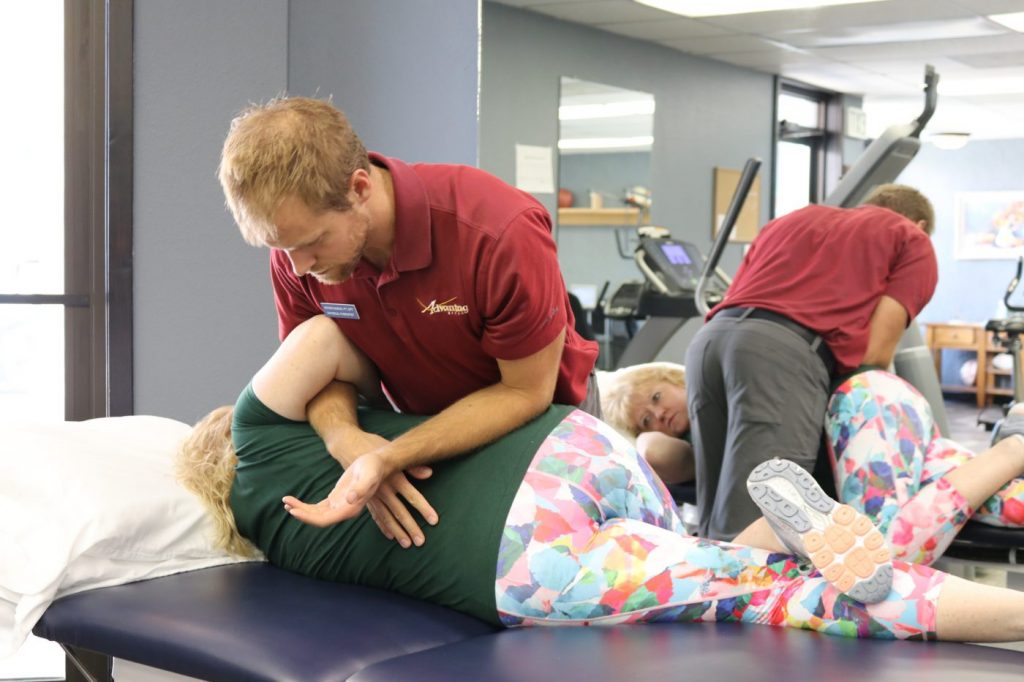Orthopedic Manual Therapy - What You Should Know

What is Orthopedic Manual Therapy?
Orthopedic manual therapy (OMT) is a broad categorical term used to describe the application of direct (hands-on) or indirect (instrument-assisted) methods by physical therapists to achieve relief from complaints in musculoskeletal pain or function. Instrument-assisted techniques can be discovered in a separate link here.
Classic, direct OMT techniques include joint mobilization, spinal manipulation, neural mobilization, and soft tissue mobilization. In each of these techniques, physical therapists utilize physical and observational assessments to formulate hypotheses regarding specific joint, soft tissue, or neural structures that underlie pain and movement disorders. They then apply specific hands-on interventions to alter the local system involved, followed by a re-testing of movement patterns to evaluate the effectiveness of the applied interventions. OMT interventions may require some active movement by the patient through specific joint ranges, or they may simply require patient relaxation and feedback.
How does Orthopedic Manual Therapy work?
There are many explanations for how and why OMT works to reduce pain and improve function in the human body. Biomechanical improvements are often witnessed after OMT, permitting greater joint and soft tissue mobility. Physiologic changes also occur, such as decreased pain, normalized pain signaling, and decreased local inflammation. In spinal treatments, there is opportunity to alter pain processing at a central level through subsequent inhibition of pain pathways and more effective control of incoming pain stimuli. Last, positive changes in expression of the opioid and dopamine systems can be observed, which is linked to processing of pain at the level of the brain.
What should I expect during manual therapy interventions?
Before an OMT intervention, your physical therapist will establish the irritability and intensity of your symptoms and complaint through an assessment of involved tissues or joints during specific activities or in specific positions that cause symptoms. An appropriate intervention will be selected and trialed, using real-time feedback from patients to ensure that both comfort and effectiveness are being achieved. Upon completion of the intervention, your physical therapist will re-evaluate the status of your symptoms to establish whether a notable effect was achieved. If a desirable outcome was not achieved, a new technique may be trialed, or the current technique may be modified. If pain and motion are improved, your physical therapist may prescribe several focused exercises in order to maintain the achievements gained through the OMT intervention.

Do physical therapists practice Chiropractic medicine?
Physical therapists are not chiropractors and do not practice chiropractic medicine. However, both physical therapist and chiropractors practice spinal manipulation techniques (SMTs) in order to treat various dysfunction in the human body. During a SMT, a rapid movement is used through a small range of motion in order to relieve a restrictive barrier in available spinal movement. An audible “pop” is frequently felt and heard at the targeted location, which is thought by most to be a release and equalization of gases around the involved joint. Notably, these “pops” or “cavitations” are not always an indication of success, as desired relief is frequently achieved with or without their occurrence during a manipulation.
A primary difference between the application of SMTs for physical therapists is the emphasis on neuromuscular dysfunction in the body in order to improve mobility, decrease pain, and create opportunities for normal muscular function.
Physical therapists are not trained to treat dysfunction in other body systems, while some chiropractors may incorporate these concepts into their treatment through embracing the spine as an axis of neurologic input/control that impacts all body systems.
An important concept for physical therapists is the necessity of focused exercise and loading after spinal manipulation. In other words, SMTs are not used as a stand-alone intervention. Rather, they create opportunities for pain-free movement that can be leveraged and capitalized upon through the incorporation of functional movements and loads that sustain higher function. This is done to enhance independent management, sustain mobility, maximize ongoing pain relief, create tissue resilience, and promote habits of moving that minimize the risk of muscular pain the body.